|
 |
|
|
 |
 |
Amy Seiwert, a Cincinnati native, was a principal dancer with the Sacramento Ballet before joining Smuin Ballet in 1999. Her work is featured in the repertories of Sacramento, Smuin, Oakland, Carolina and American Repertory ballets. She also directs the San Francisco-based contemporary ballet company, im'ij-re. In 1999, Ms. Seiwert won the Choreography Contest at Le Festival des Arts de St-Sauveur in Canada and returned to the festival in 2000 as Artist in Residence. Ms. Seiwert was named one of Dance Magazine's "25 to Watch" in 2005. During the fall of 2006, Ms. Seiwert was selected to create a work for the New York Choreographic Institute directed by Peter Martins. She choreographed a dance for Robert Moses' Kin in 2006 and was invited to create a larger scale work entitled "Slowly Watching Memory," which premieres this month. EMILY HITE: How did your ideas form for "Slowly Watching Memory"? AMY SEIWERT: Actually the Robert Moses' Kin commission, when we originally wrote for the grant (Emerging Choreographer Award from the Wallace Alexander Gerbode Foundation), was to a great extent about working with the collaborators involved—Marc Morozumi [scenery] and Mario Alonzo [costumes]—and just really being able to create from scratch. Then I found the music for the "Rothko Chapel" by Morton Feldman, and it got stuck in my head so I just kept listening to it. I spent hours researching the Rothko Chapel, which is pretty amazing. It's a place that's not for one denomination, but for all faiths. It is very much an institution for social change. The Dali Lama and Nelson Mandela, among others, have spoken there. Of course then there is the art of Mark Rothko, whose work I wasn't exposed to before this project. With the grant I was able to visit MOMA (Museum of Modern Art in New York) and see some of his works. Also in New York is the Broken Obelisk, which is what the set of my piece alludes to. There are three: one is at the chapel in Houston, one is in Seattle and the third is in the lobby of the MOMA. EH: How was it working with the Robert Moses' Kin dancers in your second work for the company? AS: Those dancers are very comfortable if I give them X amount of choreography and ask them to manipulate the material while I work with some of the other dancers. If I leave them alone for a while, they will continue developing and altering movement to a great degree. They're integral to the process; the piece would not look like what it is without these dancers. They are a goodcompany; those dancers are so talented and they work so hard. And they can move. Anyone who thinks dance is boring should come check out this company. EH: Did you try to make an RMK-specific piece? Where did you two—RMK and you as a choreographer—meet? AS: I think last year's piece was a "getting to know you" experience in some ways, because definitely this year I didn't feel as though I was making a piece on a "modern" company or a "ballet" company; I just made the piece, and it was born so organically. They also knew a lot of my weird mannerisms already. For example, "sixth position" to me means feet together in parallel (as opposed to feet hip-width apart). So the dancers call what I ask for "Seiwert Sixth." I tell them it's too many years of yoga on my part. I've learned through the experience of working with different companies that it is important to let the dancers speak their own language. I've learned to create Plans A, B and C, and to be able to deviate from all of them at any time—and to be OK with that deviation. Just being open to what is happening in the process and seeing the amazing moments that are offered by the dancers is key. Then we find a way to morph their language and mine, being comfortable letting the piece find its own direction. EH: How would you describe your choreographic influences? AS: As for choreographers who have influenced me, I'd say the people whose work I have danced a lot and whose work is in my body. Michael Smuin—especially his partnering, which is fantastic. George Balanchine, whose work I danced a lot of with Sacramento Ballet. In work I have seen, definitely Jiri Kylian. I watch Petite Mort and think it's the closest thing to God—there's not an extra step in it. It is sublime. I strive for absolute economy of movement. Absolute specifics in movement. Feldenkrais considers the different planes of motion your body has, and allows you to be specific in your movement and how you think about it. I love to show the physics of movement. As a student, I had a natural understanding of geometry. I've always been fascinated by bodywork such as Pilates and yoga and Feldenkrais. It's a fascination with the body, and as a dancer you're always asking more of it, really understanding how it moves and what it's capable of. EH: As a dancer and a choreographer yourself, do you find that your two occupations influence one another? How do you balance two full-time occupations? AS: They're going together really well right now, and that is due in large part to the support of Michael [Smuin, director of Smuin Ballet, where Amy dances]. He has a lot of belief and trust in me. Some bosses would demand that a dancer be available full-time in one role, but Michael has not made me make that choice. I feel very fortunate for that. EH: We're fortunate to be able to see you in both roles. Any final words about your piece being performed this weekend in San Francisco? AS: Come and see my piece! (laughs)
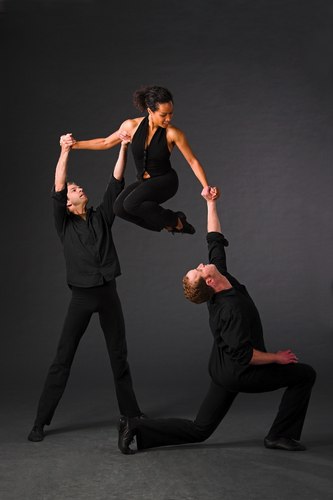 Robert Moses' Kin
( L — R) Todd Eckert, Raissa Simpson, Michael Separovich Photo © & courtesy of Marty Sohl |
|
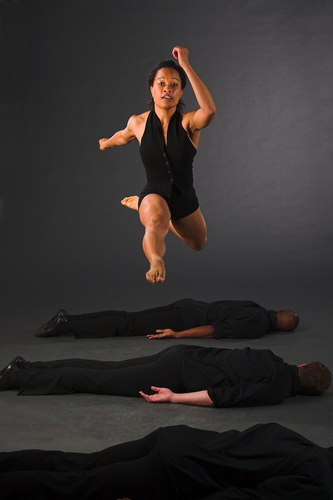 Robert Moses' Kin
Raissa Simpson over Michael Separovich ( Middle) Dwayne Worthington ( Farthest back ) Photo © & courtesy of Marty Sohl |
|
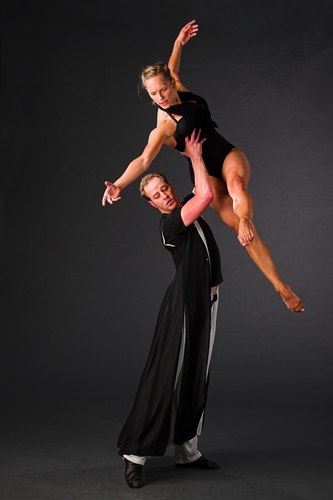 Robert Moses' Kin
Michael Separovich and Bliss Kohlmyer Photo © & courtesy of Marty Sohl |
|
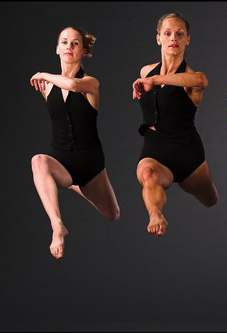 Robert Moses' Kin
( L—R) Katherine Wells, Bliss Kohlmyer Photo © & courtesy of Marty Sohl |
|
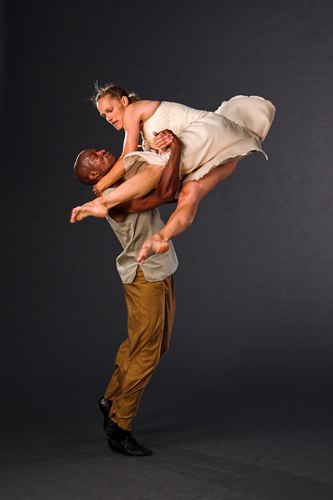 Robert Moses' Kin
Bliss Kohlmyer and Dwayne Worthington Photo © & courtesy of Marty Sohl |
|
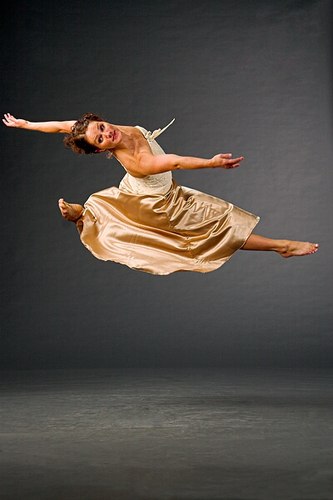 Robert Moses' Kin
Amy Foley Photo © & courtesy of Marty Sohl |
|
|
|







